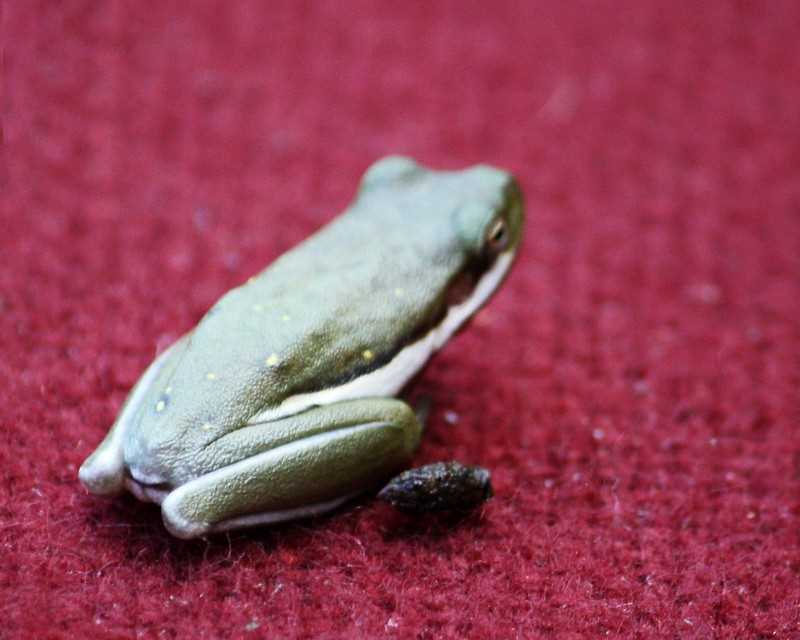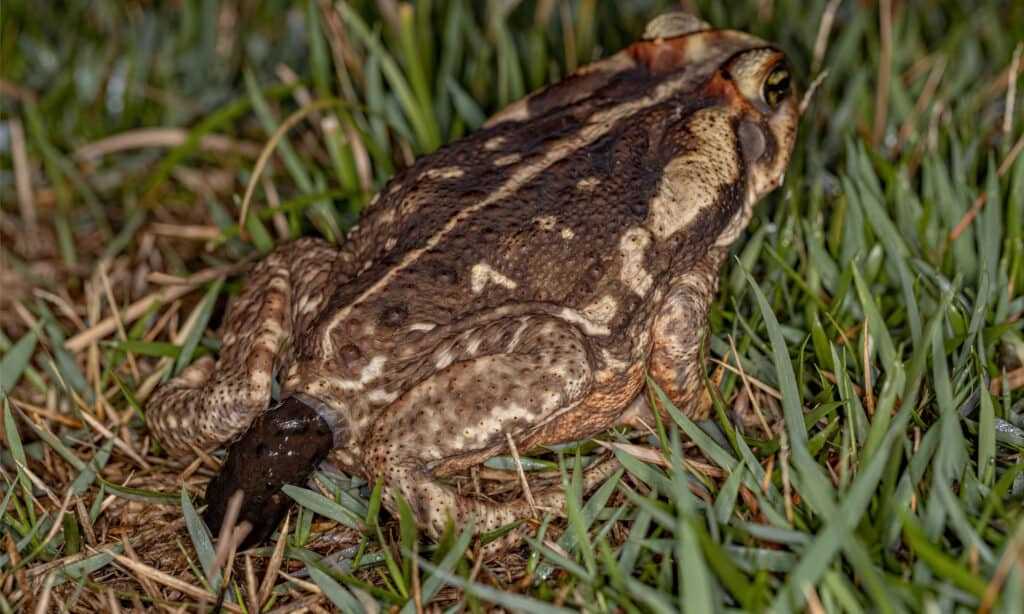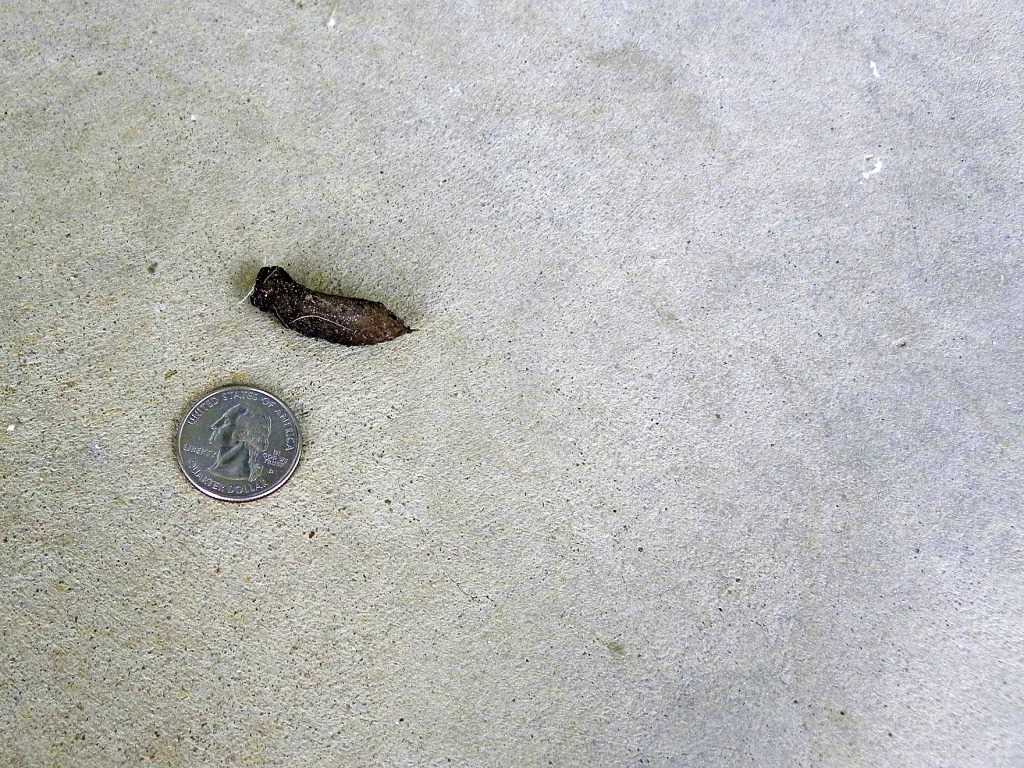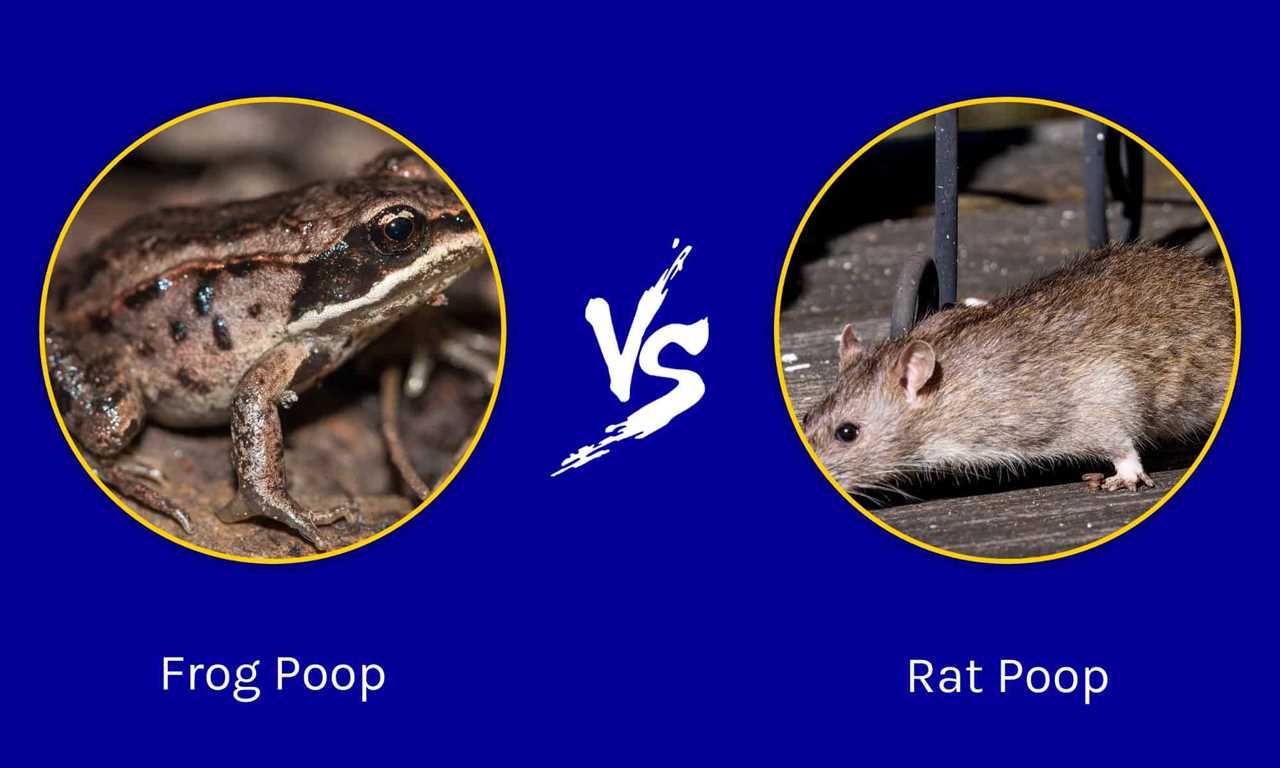Have you ever wondered what frog poop looks like? If you stumble upon a mysterious substance during your outdoor adventures, it might just be the excrement of a frog. But how can you be sure?
Generally, frog droppings are small and brown, resembling tiny cylindrical pellets. The size can range from a few millimeters to a centimeter in length. The color may also vary slightly, with some droppings appearing darker or lighter depending on the frog’s diet.
So, what does frog poop look like in more detail? It often has a tubular shape and is segmented, similar to the droppings of many other animals. However, what sets frog droppings apart is their unique texture. Frog poop tends to be moist and shiny, almost like a gel. This can be attributed to the high water content in the amphibian’s diet, as frogs primarily consume insects and other small invertebrates.
The Importance of Identifying Frog Poop
So, what does frog poop look like? Frog droppings are typically small and cylindrical in shape, resembling tiny elongated pellets. The size of the poop can vary depending on the species of frog, with larger frogs producing bigger droppings. The color and texture of frog poop also vary depending on the frog’s diet and habitat.
Identifying frog poop is crucial for researchers and conservationists studying amphibians. By analyzing the droppings, scientists can determine what frogs are eating and whether they are obtaining the necessary nutrients for survival. This knowledge helps researchers gain insights into the ecological role of frogs and their impact on various ecosystems.
In addition, identifying frog poop can also be helpful for frog enthusiasts and pet owners. If you have a pet frog, being able to recognize its droppings can indicate if it is healthy and receiving a proper diet. Unusual changes in the color, shape, or texture of frog poop may suggest an underlying health issue that requires attention.
What Does Frog Poop Look Like: Characteristics
First and foremost, frog poop is typically smaller in size compared to the droppings of larger animals, such as dogs or deer. It is usually around the size of a pea or smaller. The shape of frog poop can vary, but it is generally elongated or cylindrical in form.
The color and texture of frog poop can differ depending on the diet of the frog. In general, it can range from brownish-green to dark brown in color. The texture is typically smooth and cohesive, similar to other types of animal droppings.
One important characteristic to note is the presence of insect parts in frog poop. Frogs are carnivorous and feed on a variety of insects, so it is common to find remains of insects, such as wings or exoskeletons, in their droppings.
What Does Frog Poop Look Like?
Size and Shape
The size and shape of frog poop can vary, but it is typically small and cylindrical. Some species of frogs may have larger droppings, while others may have smaller ones. The shape can also be slightly tapered at one end.
Color and Texture
The color and texture of frog poop can also vary. It is usually brown or black, but it can sometimes have hints of green, depending on the frog’s diet. The texture is typically smooth and slightly sticky. If you touch it, it may feel moist or slimy.
The consistency of the poop can differ depending on the frog’s diet. If it has been eating insects, the poop may have a more solid appearance. On the other hand, if the frog has been consuming plants or other organic matter, the poop may be softer and have a more fragmented texture.
What Does Frog Poop Look Like: A Guide to Identifying Color and Texture
Color
The color of frog poop can vary depending on the species and its diet. Generally, you can expect to see shades of brown or green, but other colors like yellow or black may also be present. The specific color can give you clues about the diet of the frog. For example, brown poop may indicate a diet of insects, while green poop could suggest a diet heavy in plant matter.
Texture
The texture of frog poop can range from solid to semi-solid, depending on various factors. Fresh frog droppings are typically moist and pliable, but they can dry out over time. It’s worth noting that the texture can also be influenced by the diet and hydration levels of the frog.
Healthy frog poop: Healthy frog poop is well-formed and cohesive. It holds together and doesn’t crumble easily.
Watery poop: If the poop appears watery or runny, it could be a sign of diarrhea or a digestive issue. This can be an indicator of a health problem that warrants further investigation.
Bloody or mucousy poop: If you notice blood or mucus in the frog’s droppings, it may indicate an infection or internal health issue. This should be monitored closely, and if the issue persists, it’s advisable to seek veterinary assistance.
Visual Guide to Recognizing Frog Poop

Size and Shape
Frog feces can vary in size and shape depending on the species. Generally, it is small and cylindrical, similar to the shape of a tomato seed. However, the size can range from as small as a pea to as large as a grape.
Color and Texture
The color and texture of frog poop can provide helpful clues for identification. It is usually dark brown or black in color, which is a result of the frog’s diet. As for the texture, it can be either smooth or slightly lumpy, depending on the frog’s diet and hydration levels.
Visual Guide
Here is a quick visual guide to different types of frog poop:
| Type of Frog | Color of Poop | Texture |
|---|---|---|
| Green Frog | Dark brown | Smooth |
| Tree Frog | Black | Lumpy |
| Water Frog | Dark brown | Smooth |
| Marsh Frog | Black | Lumpy |
By referring to this visual guide, you can get a better idea of what frog poop looks like based on the specific frog species.
What Does Frog Poop Look Like?
Size and Shape
The size and shape of frog poop can vary, but it is typically small and cylindrical in shape. The length of frog poop can range from a few millimeters to a couple of centimeters. It is often compared to the size of a pea or a small jellybean.
Color and Texture
The color and texture of frog poop can also vary. It can range from dark brown to green, depending on the frog’s diet. The texture can be smooth or slightly lumpy, similar to the texture of other animal droppings.
Visual Guide
Here is a visual guide to help you identify different types of frog poop:
| Type of Frog | Color | Shape | Size |
|---|---|---|---|
| Green Frog | Dark brown | Cylindrical | A few millimeters |
| Tree Frog | Green | Cylindrical | A few millimeters |
| Water Frog | Green or brown | Cylindrical | A couple of centimeters |
| Marsh Frog | Green or brown | Cylindrical | A couple of centimeters |
Remember, the color and texture of frog poop can vary, so it’s essential to consider other factors such as location and habitat to make a more accurate identification.
What Does Tree Frog Poop Look Like?
Tree frog poop is typically small in size, often resembling tiny elongated pellets. The shape can vary slightly, with some droppings being rounder and others more oblong. The color of tree frog feces is usually dark brown or black, but it may also have shades of green or gray, depending on the frog’s diet.
To help identify tree frog poop, it is essential to refer to a visual guide that displays various types of frog excrement. The guide can provide detailed images and descriptions of the characteristics specific to tree frog droppings, making it easier to differentiate them from other animal feces.
Tree frog poop may be found in various locations, such as trees, bushes, or near bodies of water. The presence of their droppings can indicate the presence of tree frogs in the area. By identifying and monitoring their poop, researchers and nature enthusiasts can gather valuable information about the behavior, diet, and habitat of tree frogs.
| Characteristics | Size and Shape | Color and Texture |
|---|---|---|
| Distinctive features | Small, elongated pellets | Dark brown or black, may have shades of green or gray |
| Varying shapes (round or oblong) | Smooth texture, slight moisture or stickiness |
What Does Water Frog Poop Look Like?
Water frog poop is typically cylindrical or tube-shaped, similar to the droppings of other frog species. It is often elongated and has a slightly tapered end. The size of water frog poop can vary depending on the size and diet of the frog, but it is generally smaller than poop from larger frog species.
When examining water frog poop, you may also notice remnants of undigested food, such as insect parts or plant matter. This can provide insights into the frog’s diet and the type of ecosystem it inhabits.
What Does Marsh Frog Poop Look Like?
Frog poop, or frog droppings, can vary in appearance depending on the species of frog. One specific type of frog poop is that of the marsh frog. Marsh frog poop is unique in its characteristics and can be identified by its distinct features.
The excrement of a marsh frog is typically cylindrical in shape, resembling small tubes or pellets. The size of the poop can vary, but it is generally around one to three centimeters in length. The color of marsh frog poop ranges from dark brown to black, often appearing glossy or shiny.
One key characteristic of marsh frog poop is its texture. It has a smooth and moist consistency, similar to that of soft clay. When touched, it may feel sticky or slightly slimy.
When observing marsh frog poop, it’s essential to consider its location. Marsh frogs predominantly reside in wetland habitats such as marshes, swamps, and ponds. Therefore, if you come across droppings in or near these areas, there is a high chance it belongs to a marsh frog.
The Importance of Recognizing Marsh Frog Poop
Identification of marsh frog poop is significant for several reasons. Firstly, it allows researchers and enthusiasts to determine the presence and population of marsh frogs in a particular habitat. By monitoring their droppings, scientists can gather valuable information about the ecological health of wetland ecosystems.
Secondly, recognizing marsh frog poop aids in studying the diet and feeding habits of these amphibians. Analyzing the remains of insects or other organisms within the droppings gives insights into their food preferences and ecological role in the ecosystem.
Frog Poop vs. Other Animal Droppings
One way to distinguish frog poop from other animal droppings is by its size and shape. Frog poop is typically small and cylindrical, resembling tiny pellets or beans. It is often similar in size to a small insect or a pea. This is in contrast to the droppings of larger animals, such as mammals or birds, which tend to be larger and more elongated in shape.
Additionally, frog poop has a distinct texture and color. It is usually smooth and moist, with a glossy appearance. The color can vary depending on the diet of the frog, but it is typically green or brown. This is in contrast to the drier and more fibrous texture of mammal droppings, which often have a more granular appearance and are typically darker in color.
One key characteristic to look out for when trying to identify frog poop is the presence of undigested insect parts. Frogs are insectivores and their diet consists mainly of insects. Therefore, it is not uncommon to find remnants of insect exoskeletons or wings in frog poop. This can be a helpful clue when distinguishing it from the droppings of other animals.
Finally, the location where the poop is found can also provide valuable information. Frog poop is commonly found near water sources, such as ponds, streams, or wetlands, as frogs are amphibious creatures that rely on water for their survival. This is in contrast to the droppings of terrestrial animals, which are more likely to be found in dry land areas.
Conclusion
How to Differentiate Frog Poop from other Animal Droppings
1. Look for the Size and Shape
The first step in differentiating frog poop from other animal droppings is to analyze its size and shape. Frog droppings are generally small and cylindrical in shape. They are usually around 0.5 to 1 centimeter long and resemble tiny dark brown or black pellets.
2. Pay Attention to Color and Texture
Another characteristic to consider when differentiating frog poop is its color and texture. Frog droppings are typically dark brown or black in color. They have a relatively smooth texture and can sometimes appear shiny, especially when fresh.
3. Observe the Contents
Frog poop often contains remnants of the insects and small invertebrates that frogs eat. Look for fragments of exoskeletons or other indigestible materials in the droppings. This can help confirm that you are indeed looking at frog poop.
4. Consider the Location

The location of the poop can provide clues to its origin. Frogs are amphibious creatures, and they often leave their droppings near bodies of water such as ponds, lakes, or streams. If you find the poop in a wet or marshy area, it is likely from a frog.
5. Smell

By paying attention to these factors, you can differentiate frog poop from other animal droppings with relative ease. Remember to always handle animal waste with care and proper hygiene practices.
Common Mistakes in Differentiating Frog Poop from Other Animal Droppings
1. Size:
2. Shape:
3. Color:
Many people mistakenly assume that all green droppings are frog poop. While some frog poop can be green in color, it is not the only color you should look for. Frog poop can also be brown, depending on the frog’s diet.
4. Texture:
One of the most common mistakes is not considering the texture of the droppings. Frog poop typically has a moist and sticky texture. If you find droppings that are dry and crumbly, they are more likely to be from another animal.
5. Location:
By avoiding these common mistakes, you will have a better chance of accurately identifying frog poop. Remember to consider factors such as size, shape, color, texture, and location. If you are still unsure, it is always best to consult a field guide or an expert in amphibians.
Benefits of Proper Frog Poop Identification

For frog enthusiasts, being able to identify frog poop can enhance their overall frog-watching experience. By knowing what frog poop looks like, they can confirm the presence of frogs in a particular area and track their movements. This can be especially exciting for nature photographers and wildlife enthusiasts who want to capture unique moments of frogs in their natural habitats.
Additionally, frog poop identification can also help in monitoring the spread of diseases and parasites among frog populations. Certain diseases and parasites can be identified through the examination of frog droppings, and early detection can aid in preventing outbreaks and implementing necessary measures to protect the health of frogs and other amphibians.

I’m Lena Adams—a product of an unconventional upbringing in the African wilderness. My father, a daring explorer of African wildlife, sparked my fascination with reptiles, a passion that intertwined with the tragic loss of my mother during an expedition, leaving an indelible mark on my life. Driven to understand the creatures that captivated my parents, I embarked on my journey, sharing insights about reptiles, frogs, and lizards on my website. Through my explorations and conservation efforts, I honour my family’s legacy while seeking connections—to the creatures, nature, and the mother whose presence I yearn to understand.
